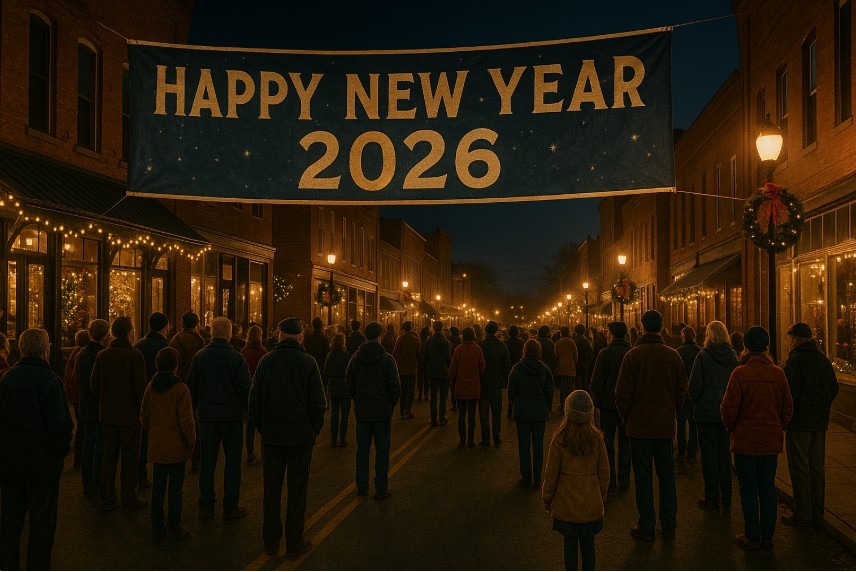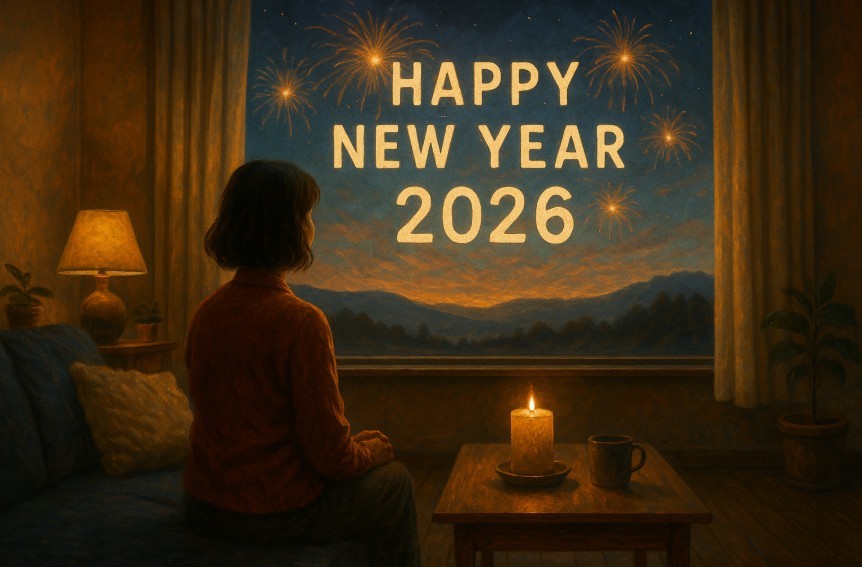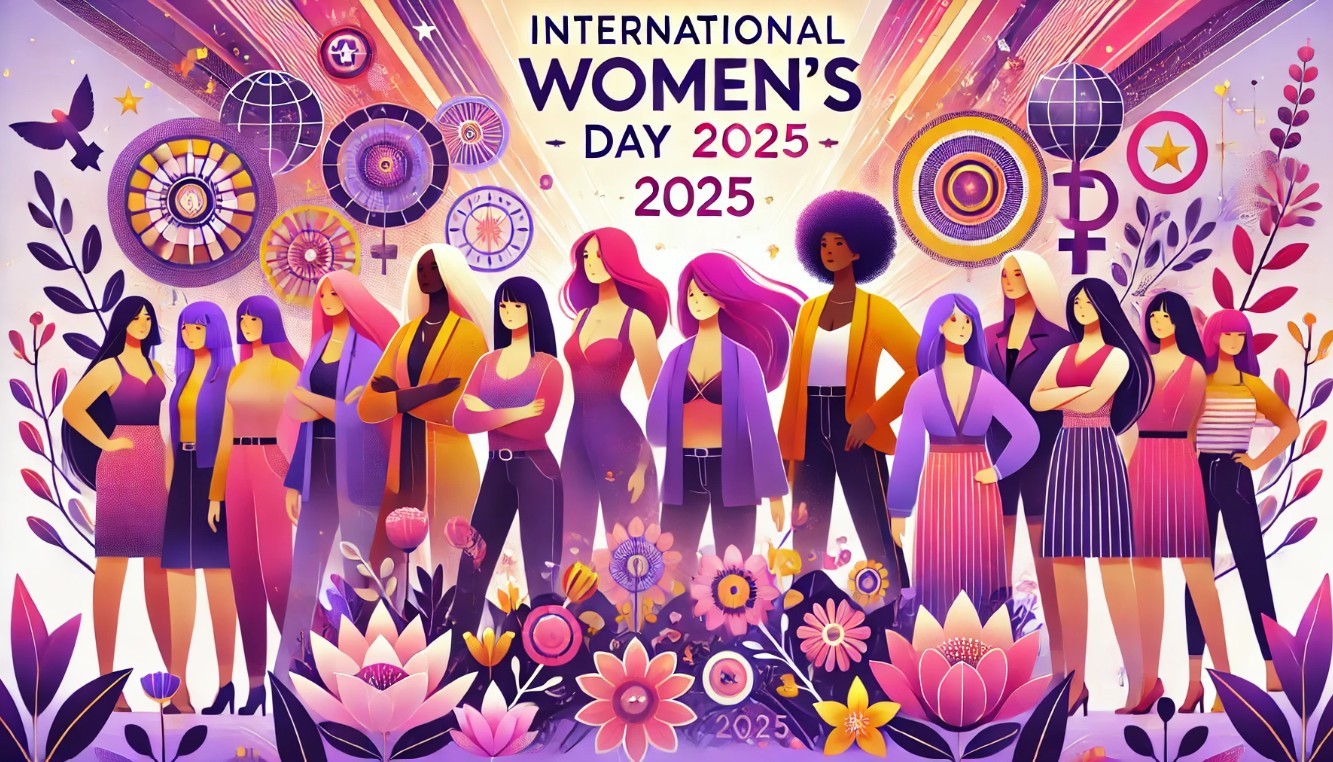How To Celebrate Japanese New Year: Traditions, Customs and Taboos
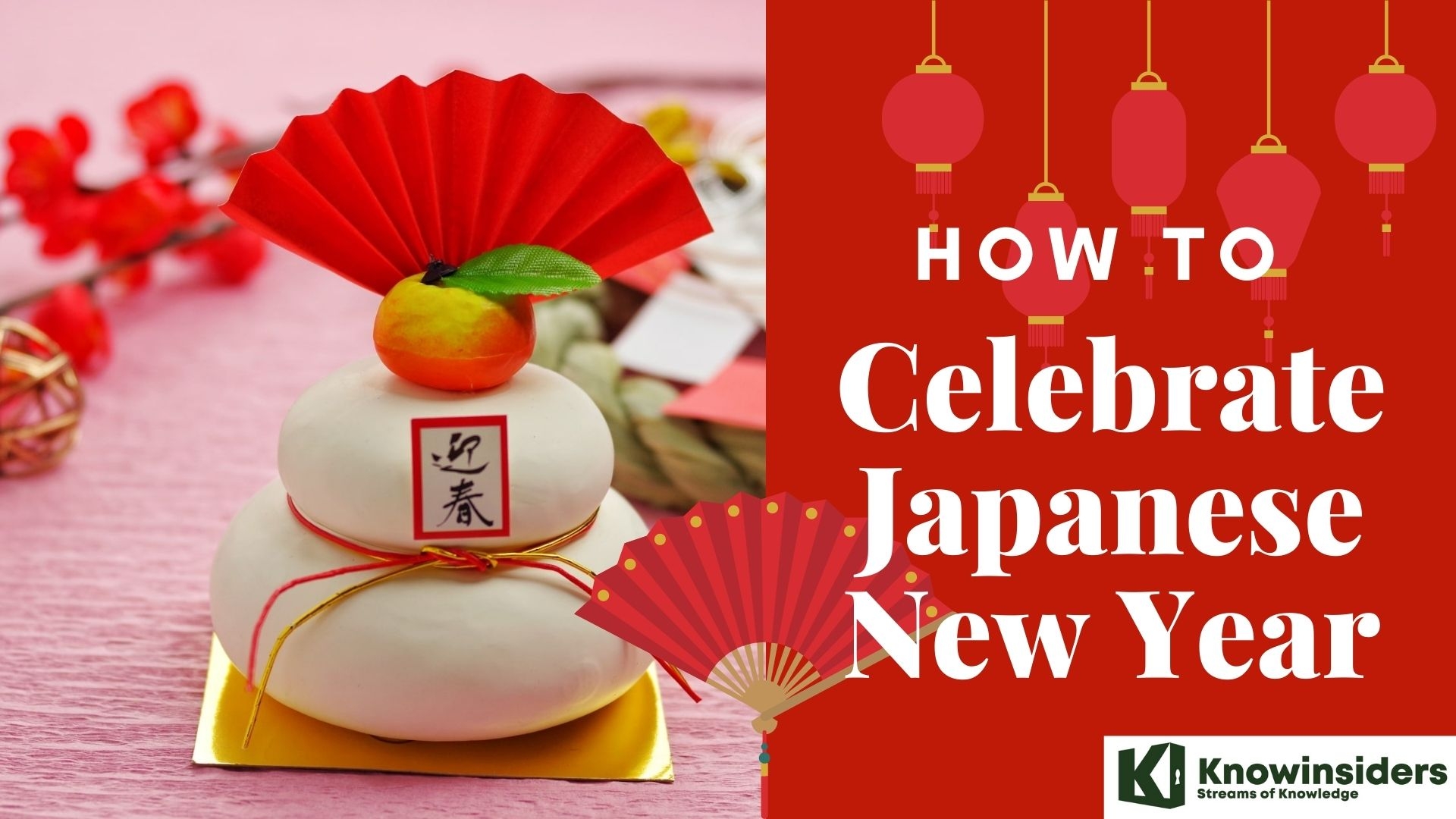 |
| How To Celebrate Japanese New Year |
The Japanese New Year (正月, Shōgatsu) is an annual festival with its own customs. Since 1873, the official Japanese New Year has been celebrated according to the Gregorian calendar, on January 1 of each year, New Year's Day (元日, Ganjitsu). However, some traditional events of the Japanese New Year are partially celebrated on the first day of the year on the modern Tenpō calendar, the last official lunisolar calendar which was used until 1872 in Japan.
Take a look at how to celebrate the Japanese New Year: Traditions, Customs and Taboos!
New Year in Japan: A Brief History
 |
| Photo: Tokyo Cheapo |
New Year’s celebrations are very important in Japan and are closely associated with beliefs of purification and renewal. The Japanese New Year celebration is called shogatsu, and New Year’s Day is called gantan. Japan has celebrated New Year’s Day on 1 January since it adopted the Gregorian calendar in 1873. Before that, the country celebrated New Year based on the timing of lunar cycles. Oshogatsu is celebrated on January 1 and lasts three days. The word itself means the ‘first three days of the year’. Schools shut down for two weeks over this period and most businesses close from December 30 to January 3. Shinto – one of the two main religious practices in Japan alongside Buddhism – traditionally believed that kami (gods) visit people’s homes on New Year’s Day, so it is important to have a clean home in order to turn over a new slate and to have a happy and prosperous year.
Preparing for the New Year
Bounenkai (忘年会; Year End Parties)
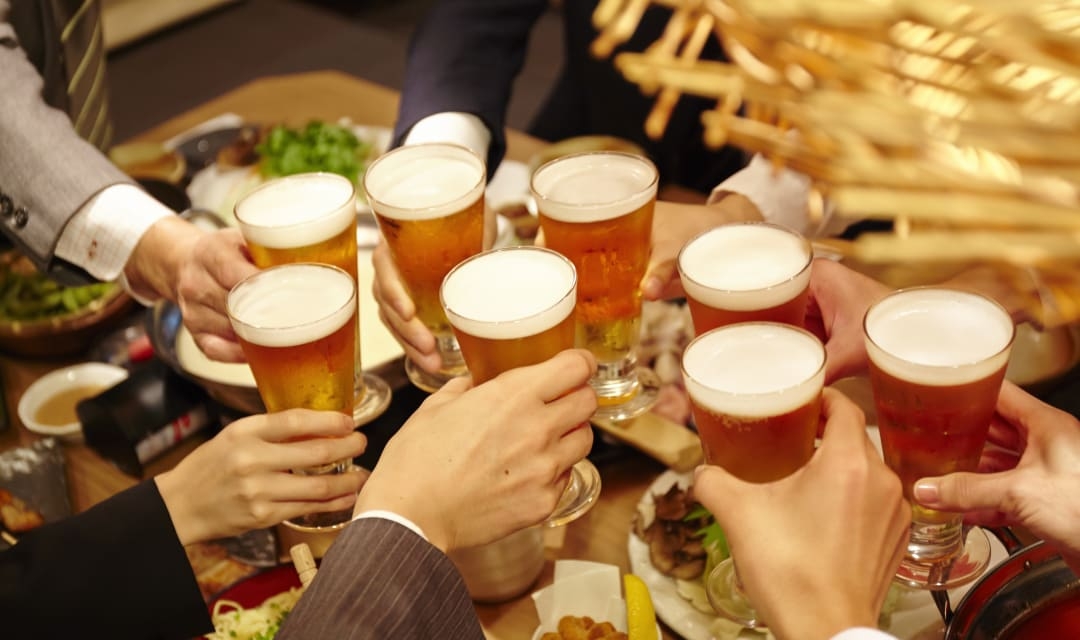 |
| Photo: Travel Japan |
In Japan, the end of December is all about bounenkai, or “End of the Year Parties”. Bounenkai roughly translates to “a party to forget about the old year.” At these events, usually organized by companies for their employees, and by groups of friends and families, people gather for a night of food, drinks, and games for the purpose of letting go of the worries and cares that the past year has brought, and looking forward to a fresh new start.
An important food to eat before the end of the year is soba, or buckwheat noodles. These are symbolic of clearing out any negativity left behind from the old year. Practiced since the Edo Period, soba noodles are an important meal to include because they are easily broken down. Because of this, people believe that eating them at year’s end breaks down and clears away any remaining stresses and negativity. Thus you can enter the New Year with a fresh, clean slate.
Oosouji (大掃除; House Cleaning)
Cleaning out the home in preparation for the new year is a worldwide concept. But the Japanese take it to another level with oosouji. The word itself translates into “house cleaning”. But it’s seen as a much bigger event, similar to the Western idea of spring cleaning. Oosouji is symbolic of preparing the home to welcome the Shinto deities of the New Year. Because of this, there’s a spiritual element involved. You clean out, not just physical dust and debris, but also negative entities and evil spirits. This tradition is said to have originated in the Heian Period as a ritual of praying for an auspicious new year.
Japanese New Year Traditions
Decoration
In the West, people decorate for Christmas with pine trees, snowflakes, and all kinds of cute, sparkly ornaments. In Japan, people decorate for the New Year in a similar fashion.
Kadomatsu is a decoration of bamboo and pine that is displayed to welcome Toshigamisama, the Shinto deity that represents a rich and abundant harvest for the new year. The pine in the decoration represents prosperity, longevity, and vitality.
Shimekazari is another important decoration for welcoming the Shinto gods and warding off evil spirits. It is an ornament made of sacred Shinto straw ropes called shimenawa and mandarin oranges, and usually hung on the front door of the home. Custom has it that this decoration marks the border between the outside world and sacred space.
Traditional food
 |
| Photo: www.hisgo.com |
The Japanese eat a selection of dishes during the New Year celebration called osechi-ryōri, typically shortened to osechi. Many of these dishes are sweet, sour, or dried, so they can keep without refrigeration: the culinary traditions date to a time before households had refrigerators and when most stores closed for the holidays. There are many variations of osechi, and some foods eaten in one region are not eaten in other places (or are even considered inauspicious or banned) on New Year's Day.
Another popular dish is ozōni, a soup with mochi rice cake and other ingredients, which differ in various regions of Japan. It is also very common to eat buckwheat noodles called toshikoshi soba on ōmisoka (New Year's Eve). Today, sashimi and sushi are often eaten, as well as non-Japanese foods. To let the overworked stomach rest, seven-herb rice soup (七草粥, nanakusa-gayu) is prepared on the seventh day of January, a day known as jinjitsu.
Mochi
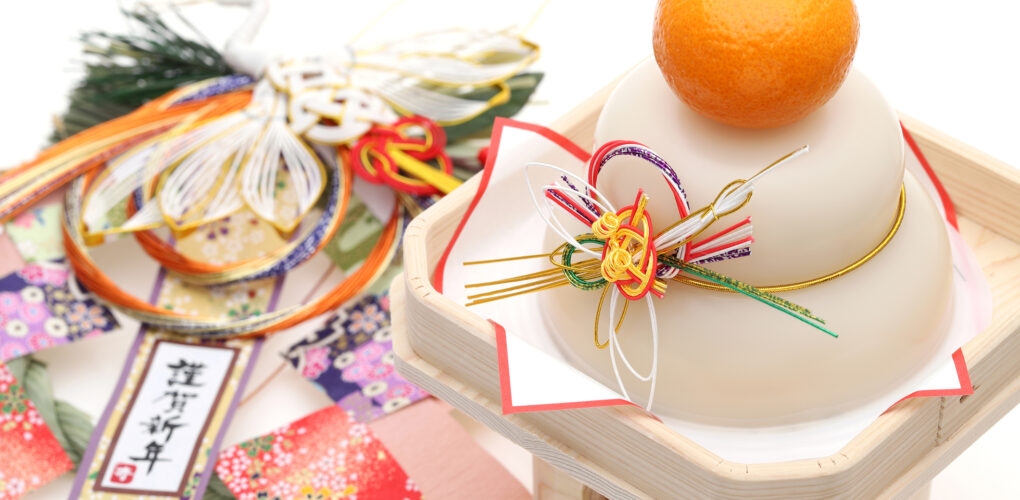 |
| Photo: iStock |
Another custom is to create and eat rice cakes (mochi). Steamed sticky rice (mochigome) is put into a wooden container usu and patted with water by one person while another person hits it with a large wooden mallet. Mashing the rice, it forms a sticky white dumpling. This is made before New Year's Day and eaten during the beginning of January.
Mochi is made into a New Year's decoration called kagami mochi, formed from two round cakes of mochi with a tangerine (daidai) placed on top. The name daidai is supposed to be auspicious since it means "several generations."
Otoshidama and New Year’s Greetings
Another tradition especially popular with children is the giving of small monetary gifts called otoshidama. However, originally it wasn’t money that was exchanged, but rice cakes!
In Shinto tradition, rice cakes were prepared and offered at shrines to Toshigamisama. Later, they were handed out to the people in attendance at the shrine. As the years passed, this tradition eventually evolved as well. It became similar to the Chinese tradition of adults giving children small red envelopes on the Lunar New Year.
otoshidama are usually given out to young children from around toddler age until about 20 years old. The amounts typically range from ¥500 to ¥10,000, gradually increasing as the child gets older.
Adults may not exchange gifts. However, New Years cards, or Nengajo, are a very important part of the tradition. Similar to the western tradition of sending Christmas cards to family and friends, these New Year’s greetings are often sent as postcards.
Historians say the negajo tradition dates to noble families exchanging letters back in the Heian Period. Back then, many nobles lived too far away to offer New Years greetings in person. When the postal system was established in the Meiji Period, the tradition evolved with the times.
Sending out postcards
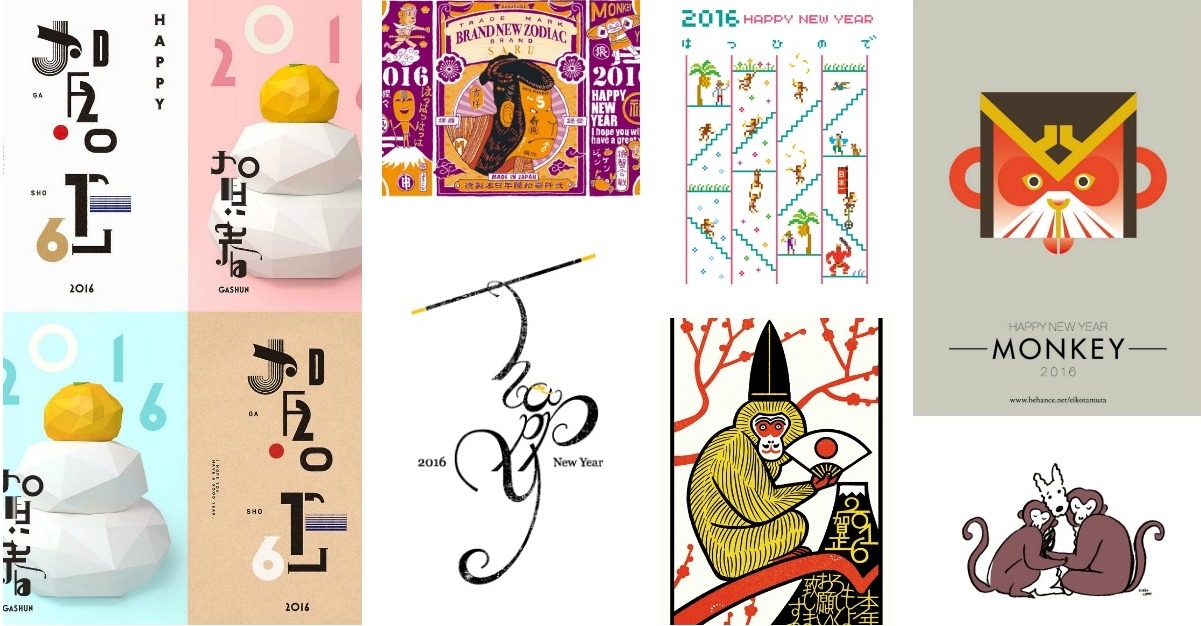 |
| Photo: Spoon & Tamago |
The end of December and the beginning of January are the busiest for Japanese post offices. The Japanese have a custom of sending New Year's Day postcards (年賀状, nengajō) to their friends and relatives, similar to the Western custom of sending Christmas cards. The original purpose was to give faraway friends and relatives tidings of oneself and one's immediate family— to tell those whom one did not often meet that he/she was alive and well.
Sending these greetings is timed so they will arrive on 1 January. The post office guarantees delivery on that day if the cards are marked with the word nengajō and mailed between mid-December and a few days before year's end. To deliver them on time, the post office usually hires students part-time.
It is customary to refrain from sending these postcards when there has been a death in the family during the year. In this case, a family member sends a simple mourning postcard (喪中葉書, mochū hagaki) to inform friends and relatives that they should not send New Year's cards, out of respect for the deceased.
People get their nengajō from many sources. Stationers sell preprinted cards. Most of these have the Chinese zodiac sign of the New Year as their design, conventional greetings, or both. The Chinese zodiac has a cycle of 12 years. Each year is represented by an animal. The animals are, in order: Rat, Ox, Tiger, Rabbit, Dragon, Snake, Horse, Goat, Monkey, Rooster, Dog, and Pig. 2008 was the year of the Rat, 2009 Ox, 2010 Tiger, 2011 Rabbit, 2012 Dragon, and 2013 Snake. 2020 will be Rat again. Famous characters like Snoopy, (2006) and other cartoon characters like Mickey and Minnie Mouse, (2008) have been especially popular in their celebrated years.
Addressing is generally done by hand, and is an opportunity to demonstrate one's handwriting (see shodō). The postcards may have spaces for the sender to write a personal message. Blank cards are available, so people can hand-write or draw their own. Rubber stamps with conventional messages and with the annual animal are on sale at department stores and other outlets, and many people buy ink brushes for personal greetings. Special printing devices are popular, especially among people who practice crafts. Computer software also lets artists create and print their own designs. Very social individuals, who have hundreds of cards to write, may go to print shops and choose from a wide variety of cards prepared with short messages, so the sender only has to address them. Despite the omnipresence of email, the nengajō remains very popular, although the younger generation sends hardly any cards. They prefer to exchange digital greetings via mobile phones, and in recent years the wider society gradually has come to accept digital greetings.
Conventional greetings include:
kotoshi mo yoroshiku o-negai-shimasu (今年もよろしくお願いします, 'I hope for your favour again in the coming year')
(shinnen) akemashite o-medetō-gozaimasu ((新年)あけましておめでとうございます, 'Happiness to you on the dawn [of a New Year]')
kinga shinnen (謹賀新年, 'Happy New Year')
gashō (賀正, to celebrate January)
shoshun/hatsuharu (初春, 'early spring'; in the traditional lunar calendar a year begins in early spring)
geishun (迎春, to welcome spring)
New Years Eve Celebrations in Japan
In the US, many people spend New Years Eve at home with family watching the ball drop in Times Square. Japan has a similar modern-day television tradition. However, instead of the ball, they’ll likely be watching one (or both) of two popular New Year’s Eve shows.
Joya no Kane: Ringing of the 108 Bells
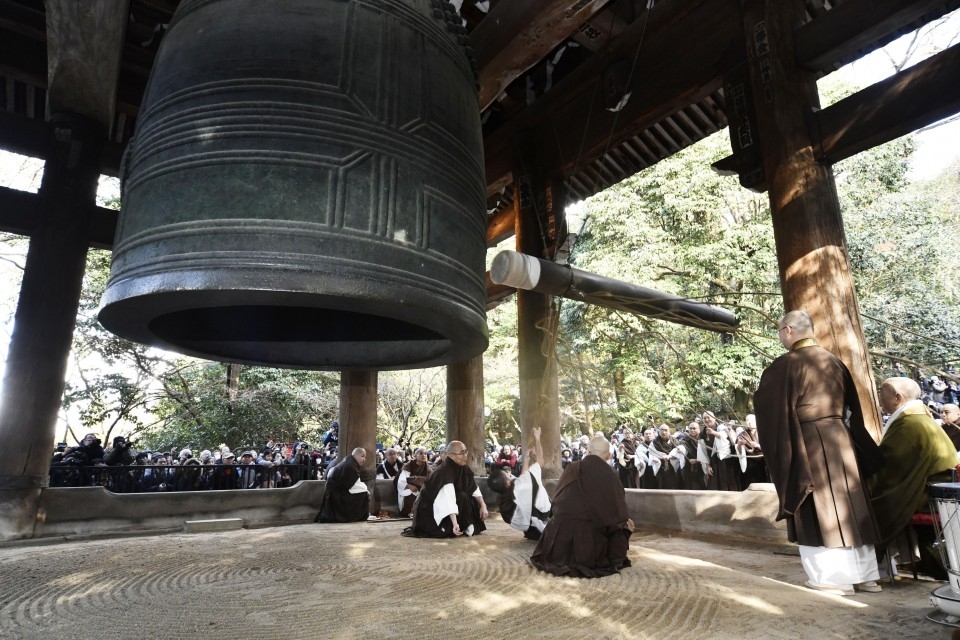 |
| Photo: Kyodo News |
Joya no Kane (除夜の鐘), or the ringing of the shrine bells on New Years Eve, is originally a Buddhist tradition. Buddhist belief holds 108 as a sacred and auspicious number. (It represents 108 paths to God, as well as 108 impurities that we must strive to avoid and clear away.). Thus, the bell is rung 108 times.
Some TV stations broadcast this Tolling of the Bell Ceremony live for comfortable viewing from one’s own home. However, some shrines also hold the ceremony for the public, and offer the opportunity to ring the bells by oneself.
NHK Kouhaku Uta Gassen
NHK’s Kouhaku Uta Gassen (NHK紅白歌合戦 ), sometimes known simply as Kouhaku, is the most popular New Year’s Eve TV program, and comparable to America’s Times Square Ball Drop. NHK broadcasts it live on TV and radio every year. The Kouhaku is a musical event in which the most popular artists of the year compete. Contest hosts divide competitors into teams of male and female artists, respectively grouped into white and red teams.
Started in 1951 as a radio-only broadcast, Kouhaku has become one of the most popular and anticipated events of the year. It’s considered a huge honor for any artist to receive an invitation to perform. The show runs in the evening and ends just before midnight. Thus, viewers can fully enjoy both the entertainment and the following tradition of watching the Bell Tolling Ceremony.
Hatsumoude: First Shrine Visit of the Year
 |
| Photo: MATCHA |
Traditionally held exactly at midnight, at the very start of the first day of the New Year, hatsumoude is usually performed within the first three days of January. Many people go together as a family. However, some choose to make it a personal event and go either by themselves or as a couple.
During this visit, it is customary to offer thanks, and pray for your new intentions for the New Year. As with any shrine visit, it is important to follow the same etiquette you would at any other time. This begins with purifying yourself and ending with giving thanks to the gods. It is also common to purchase omikuji, or fortune papers. These predict your luck for the New Year.
It is also viewed as auspicious to watch the first sunrise of the year, called hatsuhinode. If you visit one of these shrines at midnight or before dawn, don’t forget to turn your eyes skyward and make a wish upon the sun!
Six things (taboos) to avoid doing in the first three days of the Japanese New Year
1. Don’t clean
This is one we can get behind: don’t do housework in the first three days of the new year! Supposedly the Japanese New Year’s god, Toshigami-sama, comes for a visit sometime in those three days to bring luck to each family, and if you’re cleaning. it drives him away. Plus, by doing laundry, and cleaning sinks, bathtubs, and toilets, you’re flushing a lot of good luck down the drain with all that water. In short, waiting patiently for Toshigami-sama to come and bring you good luck is much better than bustling around cleaning your house, and we really couldn’t agree more.
2. Don’t use knives
Knives are dangerous…you could cut yourself! And by cutting yourself in the first three days of the new year, you may also cut off your good luck for the year. To prevent this, in Japan, people typically cook a great deal of osechi ryori, a lucky New year’s meal, and ozoni, a hearty soup with meat and mochi, on December 31, so they don’t have to cook at all in the first three days of the year (if you’re not that ambitious, we recommend popping into your local convenience store and picking up some bento instead) In some regions, t’s also considered unlucky to cut your fingernails during the first three days, so it’s probably just best to be safe and just avoid cutting (hair, paper, etc.) altogether.
3. Don’t use fire to cook, and don’t boil food
The first three days of the new year are a time for rest, and that includes the gods too. So avoid cooking with fire, because the god of the cooking stove, Ojin-sama, will get angry, and one thing you don’t want in the new year is an angry god on your hands.
The reason why you shouldn’t boil food, besides angering the cooking stove god by using the stove, is because boiling food produces scum on the surface of the liquid. Aside from being gross, scum is a symbol for the bad things in life, so by boiling food you’re allowing the bad things to come to the surface, and that’s no good.
But you’re not supposed be cut anything anyway, so you should be fine with this rule!
4. Don’t eat four-legged animals
This specifically refers to beef, pork, and horsemeat, though it may be extended to other animals as well. The reasons behind this tradition are unknown, but it’s thought to be a custom influenced by Buddhism, which holds a policy of killing no living creatures and eating no meat. There aren’t any known spiritual repercussions to eating hamburgers in the new year, but if you’re worried about it, go vegetarian for three days. Chicken is also fine to eat (although we’re not sure why two legs are better than four), so you can get some karaage (Japanese fried chicken) instead, if you wish. Eggs and fish also have no legs, so you can eat those as well, but we’re honestly not sure where squid fall on the spectrum. Do they have four arms, or four legs? Do their tentacles count? These are the important questions.
5. Don’t fight
Getting along with your friends and family in the first few days of the new year sets you up for good relations for the rest of the year. While fighting with someone won’t ruin your entire year, and it may not affect your relationship with the gods, it will affect your relationships with the people around you. Really, it just starts the year off on the wrong foot, and can bring about bad juju for the year ahead.
6. Don’t spend a lot of money
Oops…we already broke this rule. While New Year’s is the best time to shop because you can get awesome lucky bags, you should actually try to avoid spending too much money, if at all, in the first few days. It is believed that if you spend too much in the new year, you won’t be able to save money throughout the year. Honestly, superstitions aside, that’s pretty solid advice; the less money you spend now is more money in the bank later! Naturally, though, the gods won’t begrudge you if you drop a few coins in the shrine donation box, you know what I’m sayin’?
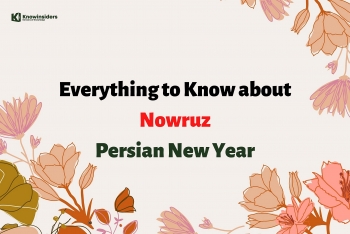 What and How to Celebrate Persian New Year 'Nowruz' What and How to Celebrate Persian New Year 'Nowruz' Nowruz is the Persian New Year celebrated by many countries in the Middle East, Central Asia and those in the Bahá’í faith. Check out this ... |
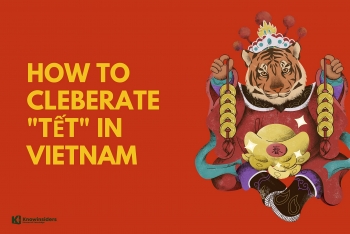 How to Celebrate a Vietnamese New Year's (Tet) How to Celebrate a Vietnamese New Year's (Tet) The lunar new year holiday, known simply as Tết, is the happiest time of year in Vietnam. How to celebrate Vietnamese New Year (Tet)! |
 How to Celebrate New Year Virtually During Covid-19 How to Celebrate New Year Virtually During Covid-19 Check out 7 interesting ideas to celebrate New Year during the Covid-19 pandemic! |
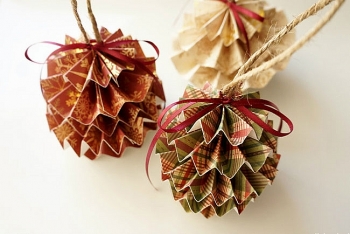 How to Celebrate a Meaningful Christmas Party at Home How to Celebrate a Meaningful Christmas Party at Home Many people will worry that Christmas can be boring when they have to stay at home. But, thanks to these following easy tips, you can ... |

